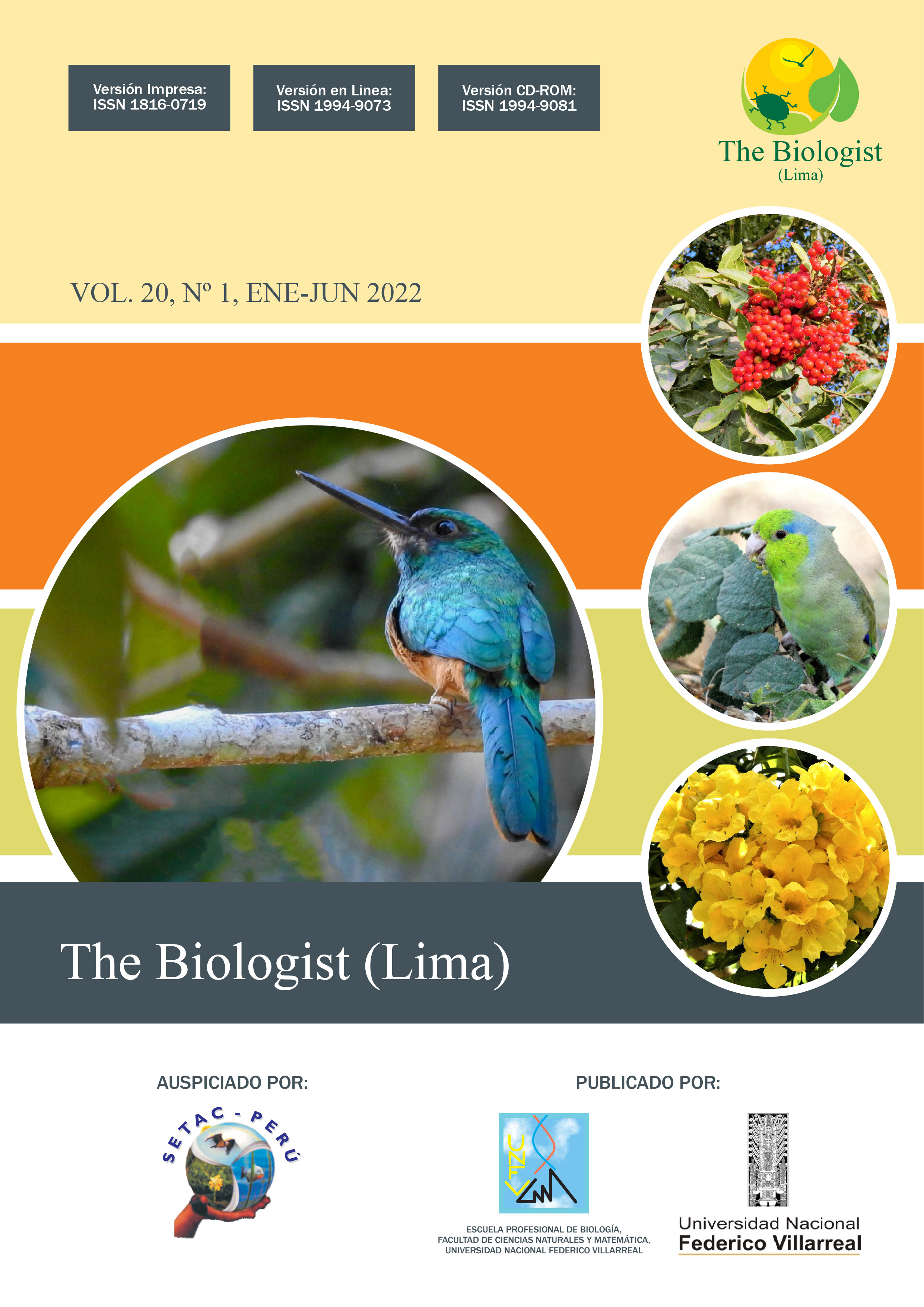FECUNDITY AND SEXUAL RATIO OF FLYING FISH CHEILOPOGON HETERURUS (RAFINESQUE, 1810) (EXOCOTIDAE, BELONIFORME) IN THE SOUTH OF PERU
DOI:
https://doi.org/10.24039/rtb20222011306Keywords:
Flying fish, partial fecundity, relative fecundity, sex ratio, synchronic-groupAbstract
During October and February many species of flying fish arrive to the south coast of Peru, Cheilopogon heterurus (Rafinesque, 1810) included, developing a fishery around them. This fishery is focus in the collection of eggs. However, this kind of fishery affects directly the recruitment and sustainability. In this paper, the partial and relative fecundity, the sex ratio per year and length and type of reproduction were calculated with samples from San Juan de Marcona and Ilo, Perú. They were obtained during December 2012, 2013 and 2014. To calculate the fecundity, we used 39 hydrated females. The sex ratio was analyzed for 442 fishes. 30 females were used to analyze the type of reproduction. To estimate the fecundity, we used the oocyte hydrate counting method. Furthermore, the significant difference in sex ratio was calculated by Chi Square. Also, the type of reproduction was verified by the difference of oocyte´s length. The partial fecundity was 13 767 ± 4348 per spawning batch and the relative fecundity was 46 ± 12 per g of fish. On the other hand, the sex ratio per year did not present significant difference. Nevertheless, for the sex ratio per length, it was possible to observe more males of smaller lengths and more females in length over 30 cm. Finally, the type of reproduction of Ch. heterurus was of synchronic group.
Downloads
Published
How to Cite
Issue
Section
License

This work is licensed under a Creative Commons Attribution-NonCommercial-NoDerivatives 4.0 International License.
Objeto: El AUTOR-CEDENTE transfiere de manera TOTAL Y SIN LIMITACIÓN alguna al CESIONARIO (Revista The Biologist (Lima)) los derechos patrimoniales que le corresponden sobre sus obras por el tiempo que establezca la ley internacional. En virtud de lo anterior, se entiende que el CESIONARIO adquiere el derecho de reproducción en todas sus modalidades, incluso para inclusión audiovisual; el derecho de transformación o adaptación, comunicación pública, traducción, distribución y, en general, cualquier tipo de explotación que de las obras se pueda realizar por cualquier medio conocido o por conocer en el territorio nacional o internacional.
Remuneración: La cesión de los derechos patrimoniales de autor que mediante este contrato se hace será a título gratuito.
Condiciones y legitimidad de los derechos: El AUTOR-CEDENTE garantiza que es propietario integral de los derechos de explotación de la(s) obra(s) y en consecuencia garantiza que puede contratar y transferir los derechos aquí cedidos sin ningún tipo de limitación por no tener ningún tipo de gravamen, limitación o disposición. En todo caso, responderá por cualquier reclamo que en materia de derecho de autor se pueda presentar, exonerando de cualquier responsabilidad al CESIONARIO.
Licencia de acceso abierto: El AUTOR-CEDENTE autoriza que manuscrito publicado en la Revista Científica The Biologist (Lima) (versión Impresa ISSN 1816-0719, versión en línea ISSN 1994-9073) permanece disponible para su consulta pública en el sitio web http://revistas.unfv.edu.pe/index.php/rtb/index y en los diferentes sistemas de indexación y bases de datos en las que la revista tiene visibilidad, bajo la licencia Creative Commons, en la modalidad Reconocimiento-No comercial- Sin Trabajos derivados –aprobada en Perú, y por lo tanto son de acceso abierto. De ahí que los autores dan, sin derecho a retribución económica, a la Escuela Profesional de Biología, Facultad de Ciencias Naturales y Matemática de la Universidad Nacional Federico Villarreal (EPB - FCCNM - UNFV), los derechos de autor para la edición y reproducción a través de diferentes medios de difusión.









































